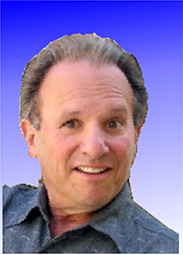In last month’s issue, I concluded the section dealing with condensing solvent and common problems associated with this process. I’ll discuss removing unwanted water from the condensed solvent in this issue.
WHAT IS SOLVENT/WATER SEPARATION, AND WHY IS IT NECESSARY?
Garments absorb water in the form of moisture when exposed to the environment. This moisture is transferred to the solvent during the wash cycle and during distillation, is vaporized, and then condensed along with the solvent. To remove this water from the solvent stream, some form of “separation” is required. When two liquids are immiscible (they won’t dissolve into one another), the lighter liquid floats on the surface of the heavier (think oil and water). This principle is used to separate water from solvent in the dry cleaning distillation and drying processes and is called “gravity separation.” The efficiency of this type of separation depends on several factors, the major ones listed below:
- The difference in the specific gravity between the solvent being used and condensed water. The larger the difference, the easier the two liquids separate. For this reason, machines using perc which has a significant difference between the specific gravities, a single separator is sufficient, while machines using lighter than water solvents with particular gravities which are very close to each other require multiple separators.
- The volume where the separation occurs. The larger the volume of the separator, the greater the efficiency of the separation.
- The turbulence inside the separator. Separation is more efficient when there is less turbulence mixing the liquids.
- The time allowed for the liquids to separate; the longer the separation, the more efficient.
- The temperature of the liquids is important in separation. Up to a point, the cooler the liquids, the more efficient the separation.
Systems designed to separate PERC are relatively straightforward and vary little between the machine manufacturers. The condensed water/solvent mixture is collected in a container where it is allowed to settle. The separated solvent sinks to the bottom while the water floating on top is conducted to a drain tube leading out of the separator for disposal.

Systems designed to separate LIGHTER THAN WATER SOLVENTS are a different matter entirely. It’s not possible to describe this type of separation process because each equipment manufacturer has its preferred method of attacking the problems associated with this type of separation. The close values of the specific gravity between that of water and the solvent require:
- The addition of multiple separation stages provides greater volume in which to expand, settle, and separate.
- Extending the time when separation occurs by providing a dedicated separator called a pre-separator, allowing water removal from the first stage during the first 6-10 minutes of separation, thereby removing most of the water from the water/solvent mixture in the pre-separation stage.
- Providing a large volume of separation area in the form of a separate main water separator.
- Providing a large volume dedicated water collection tank.
Well, that’s it for the series on distillation. I’m not sure what the next issue will be about, so let me know if you have any suggestions for a subject you’re curious about.

Bruce Grossman
Bruce Grossman is the Chief of R&D for EZtimers Manufacturing. EZtimers is the manufacturer of the new EZ DOSE boiler compound manager and return tank level control which replaces that troublesome ball float valve in the condensate return tank and automatically adds the correct amount of boiler compound to the return tank preventing the oxygen corrosion and scaling. Our SAHARA and DIB-M high purity separator water mister/evaporators provide a thrifty, legal method to get rid of the separator water generated by your dry-cleaning machine. See our Ad in this issue and for further information on EZtimers products visit www.eztimers.com Please address any questions or comments for Bruce to bruce@eztimers.com or call 702-376-6693.

